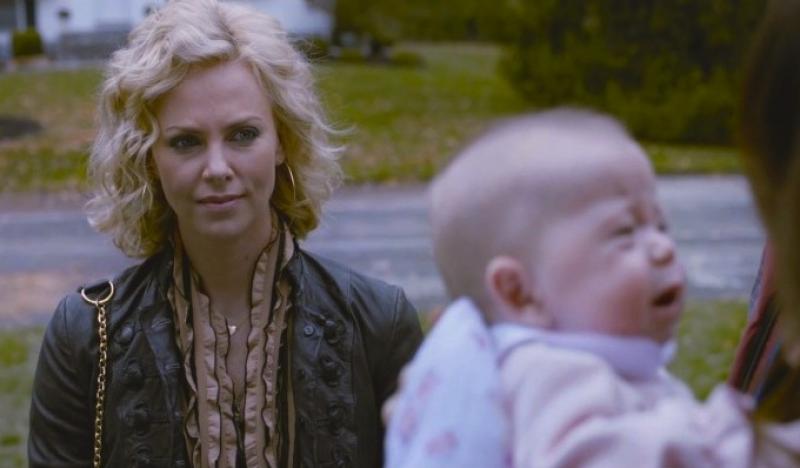LETS GET BACK TO THIS BLOGGING BUSINESS.
“You don’t know shit about being an adult.”
- Diablo
Cody
But who ever fully learns how to be an
adult?
Being in the same position as thousands of
other graduates in this current job climate definitely takes its toll.
Especially being on the receiving end of not-so-constructive, bordering on
ridiculous, criticism such as: dressed too casual, dressed too smart, looked too
serious, and the personal favorite, ‘too ambitious.' Thus my self worth has taking
a brutal bashing over these past months. Thankfully, cinema offers an escape and most
of the films I raved about last month have hit the big screens. YES! However I haven't had the chance to see any of them yet (dammit).
One person that I hadn’t heard from recently
was Diablo Cody, the writer of the Oscar winning “Juno” in 2010. I thought; ‘she
writes films about young teen/ adolescent women who are having massive life
issues in quirky and funny ways- why not watch some of her stuff to lift me out of my slump. So I decided to watch Cody’s film “Young Adult” (2011), directed by Jason Reitman – and it really did make me feel so much better, lift my mood and make
me think: ‘thank god my life isn’t like Charlize Theron’s character.'
“Young Adult” (2011) is about Mavis Gary (Charlize Theron), a woman in her late 30s and in the mist of a mid life crisis. She is recently divorced and unable to make it as a famous writer. She is currently a ghostwriter for a series of Young Adult fiction, a job which she has held for a couple of years. At the beginning, Mavis appears to be a person who, although complains a lot, is living the life that she has always wanted. She is living in the big city- in this case Minneapolis, which compared to the little town Mavis comes from, is the big city; she has no attachments like a 9-5 job, or a husband; and a beautiful modern apartment.
“Young Adult” (2011) is about Mavis Gary (Charlize Theron), a woman in her late 30s and in the mist of a mid life crisis. She is recently divorced and unable to make it as a famous writer. She is currently a ghostwriter for a series of Young Adult fiction, a job which she has held for a couple of years. At the beginning, Mavis appears to be a person who, although complains a lot, is living the life that she has always wanted. She is living in the big city- in this case Minneapolis, which compared to the little town Mavis comes from, is the big city; she has no attachments like a 9-5 job, or a husband; and a beautiful modern apartment.
Being a ghostwriter for a series of Young Adult literature, Mavis is used to writing in a particular style that is marketed for ages between twelve and eighteen. This particular readership group can usually relate to the protagonist within YA (Young Adult) novels, who also tends to be within this age bracket. The genre focuses on a range of themes such as identity, sexuality, drug and substance abuse, bullying, and family troubles. Essentially they are coming of age stories, about youth rebellion and finding 'ones self', the transition from troubled teenager to affluent adult. Cody's “Young Adult” film embodies all those themes but the protagonist is not within the above age bracket, she doesn't go through any real transition at all, and there are definitely no life lessons learnt throughout the film.
Mavis doesn’t fully realize until the end of the film that she might be unhappy and a bit mentally unstable. Her daily routine comprises of her waking up, writing a couple of lines or staring at a blank page, playing the WII, and eating her way through a nutritious array of ready meals. Her life is thrust back into gear as she receives a picture of her ex-high school boyfriend, Buddy Slades, newborn baby, and she decides to pack her bags and head back home to her old small town of Mercurary, Minnesota, to try and win Buddy back, despite the fact that he has just become a father and is happily married.
There are several clues that indicate that Mavis may not be emotionally stable- okay, okay so throughout the whole film the viewer is waiting for Mavis to have her mental breakdown. It’s a good breakdown- in the sense that it provides good entertainment value: its awkward, upsetting, yet funny and just plain embarrassing, which brings me back to my point- thank God my life is better than Charlize Therons character.
Marvis is stuck in the past, unable to see beyond the bounds of her high school years when she was in her prime. She cannot understand why her popularity is wearing thin. Her inability to move forward is highlighted in several ways: she constantly replays the same song that Buddy gave to her on a mix tape years before, ‘the concept’ by Teenage Fanclub, she listens in to teenagers giving advice about relationships, she wears hello kitty t-shirts, ignores all of the responsibilities an adult should have and finally whats the strongest clue that she is mentally instable? She persistently watches episodes of the Kardashians.
If the viewer is looking for a film with
some form of conclusion, a finale, a happy-ending then “Young Adult” (2011) is…not the film.
The whole film is stuck in a time zone and many/ almost all of the characters
don’t make any progress in their lives. As per usual Charlize Theron creates a great character that the viewer will love to hate. The film delivers funny witty lines written by Cody and in conclusion is watchable but probably not the most memorable film you will watch in your life.





